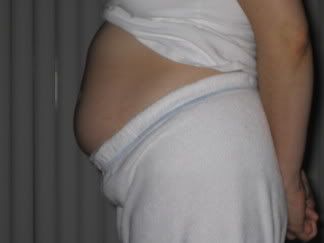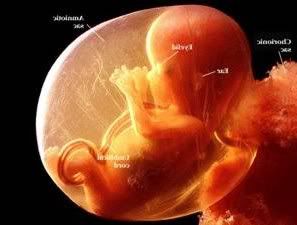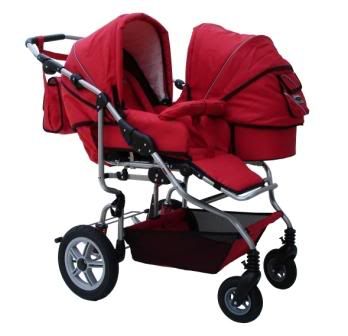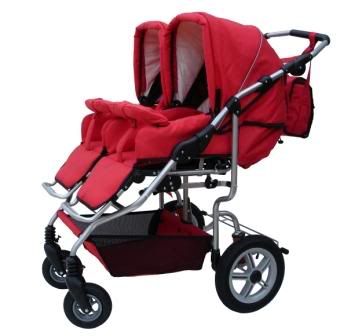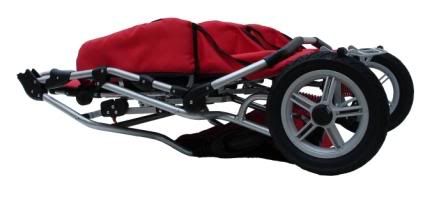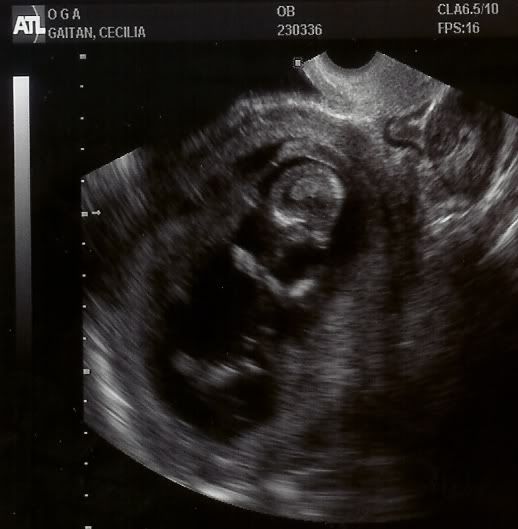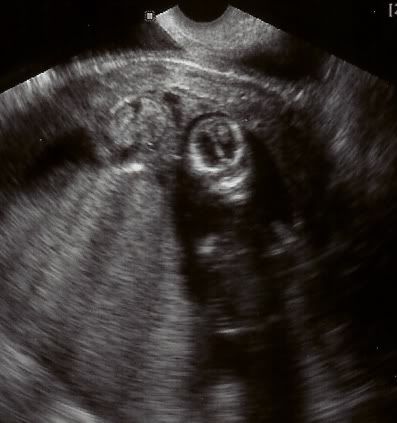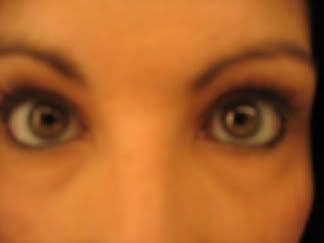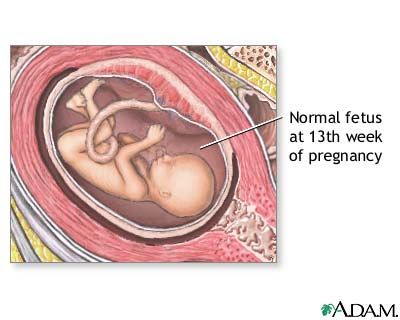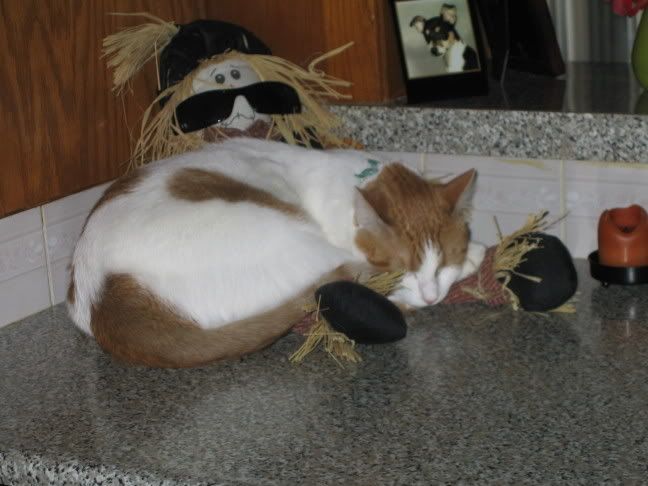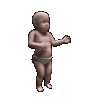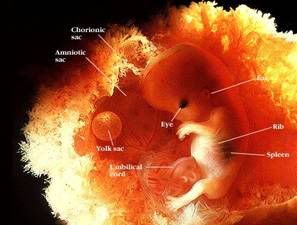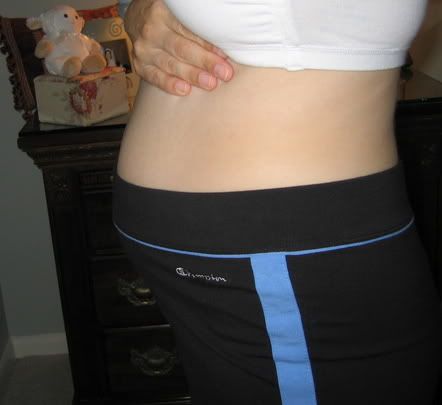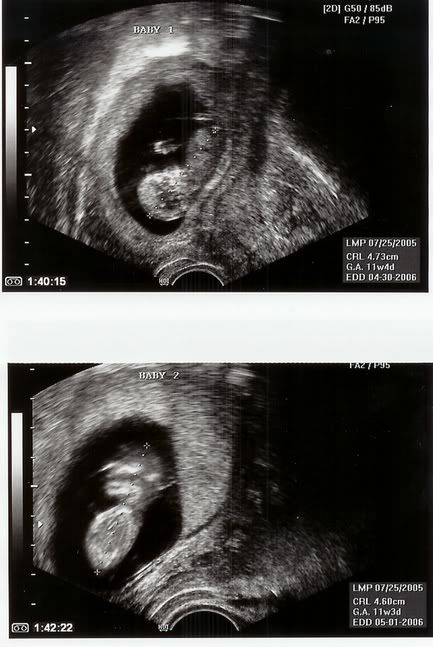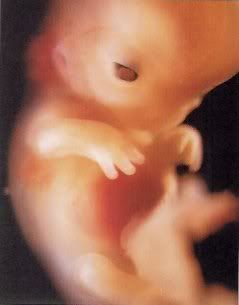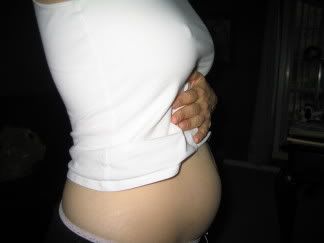No I don't have it, I thank God everyday for my mental clarity. But I found a rather interesting source to explain the perverse course of events I've been (unfortunately) privy to of late. I find this article rather intruiging...suits the situation to a "T."
Bipolar disorder, also known as manic-depressive illness, is a brain disorder that causes unusual shifts in a person's mood, energy, and ability to function. Different from the normal ups and downs that everyone goes through, the symptoms of bipolar disorder are severe. They can result in damaged relationships, poor job or school performance, and even suicide. But there is good news: bipolar disorder can be treated, and people with this illness can lead full and productive lives.
Bipolar disorder typically develops in late adolescence or early adulthood. However, some people have their first symptoms during childhood, and some develop them late in life. It is often not recognized as an illness, and people may suffer for years before it is properly diagnosed and treated. Like diabetes or heart disease, bipolar disorder is a long-term illness that must be carefully managed throughout a person's life.
"Manic-depression distorts moods and thoughts, incites dreadful behaviors, destroys the basis of rational thought, and too often erodes the desire and will to live. It is an illness that is biological in its origins, yet one that feels psychological in the experience of it; an illness that is unique in conferring advantage and pleasure, yet one that brings in its wake almost unendurable suffering and, not infrequently, suicide."
What Are the Symptoms of Bipolar Disorder?
Bipolar disorder causes dramatic mood swings—from overly "high" and/or irritable to sad and hopeless, and then back again, often with periods of normal mood in between. Severe changes in energy and behavior go along with these changes in mood. The periods of highs and lows are called episodes of mania and depression.
Signs and symptoms of mania (or a manic episode) include:
Increased energy, activity, and restlessness
Excessively "high," overly good, euphoric mood
Extreme irritability
Racing thoughts and talking very fast, jumping from one idea to another
Distractibility, can't concentrate well
Little sleep needed
Unrealistic beliefs in one's abilities and powers
Poor judgment
Spending sprees
A lasting period of behavior that is different from usual
Increased sexual drive
Abuse of drugs, particularly cocaine, alcohol, and sleeping medications
Provocative, intrusive, or aggressive behavior
Denial that anything is wrong
A manic episode is diagnosed if elevated mood occurs with three or more of the other symptoms most of the day, nearly every day, for 1 week or longer. If the mood is irritable, four additional symptoms must be present.
Signs and symptoms of depression (or a depressive episode) include:
Lasting sad, anxious, or empty mood
Feelings of hopelessness or pessimism
Feelings of guilt, worthlessness, or helplessness
Loss of interest or pleasure in activities once enjoyed, including sex
Decreased energy, a feeling of fatigue or of being "slowed down"
Difficulty concentrating, remembering, making decisions
Restlessness or irritability
Sleeping too much, or can't sleep
Change in appetite and/or unintended weight loss or gain
Chronic pain or other persistent bodily symptoms that are not caused by physical illness or injury
Thoughts of death or suicide, or suicide attempts
A depressive episode is diagnosed if five or more of these symptoms last most of the day, nearly every day, for a period of 2 weeks or longer.
A mild to moderate level of mania is called hypomania. Hypomania may feel good to the person who experiences it and may even be associated with good functioning and enhanced productivity. Thus even when family and friends learn to recognize the mood swings as possible bipolar disorder, the person may deny that anything is wrong. Without proper treatment, however, hypomania can become severe mania in some people or can switch into depression.
Sometimes, severe episodes of mania or depression include symptoms of psychosis (or psychotic symptoms). Common psychotic symptoms are hallucinations (hearing, seeing, or otherwise sensing the presence of things not actually there) and delusions (false, strongly held beliefs not influenced by logical reasoning or explained by a person's usual cultural concepts). Psychotic symptoms in bipolar disorder tend to reflect the extreme mood state at the time. For example, delusions of grandiosity, such as believing one is the President or has special powers or wealth, may occur during mania; delusions of guilt or worthlessness, such as believing that one is ruined and penniless or has committed some terrible crime, may appear during depression.
People with bipolar disorder who have these symptoms are sometimes incorrectly diagnosed as having schizophrenia, another severe mental illness.
It may be helpful to think of the various mood states in bipolar disorder as a spectrum or continuous range. At one end is severe depression, above which is moderate depression and then mild low mood, which many people call "the blues" when it is short-lived but is termed "dysthymia" when it is chronic. Then there is normal or balanced mood, above which comes hypomania (mild to moderate mania), and then severe mania.
In some people, however, symptoms of mania and depression may occur together in what is called a mixed bipolar state. Symptoms of a mixed state often include agitation, trouble sleeping, significant change in appetite, psychosis, and suicidal thinking. A person may have a very sad, hopeless mood while at the same time feeling extremely energized.
Bipolar disorder may appear to be a problem other than mental illness—for instance, alcohol or drug abuse, poor school or work performance, or strained interpersonal relationships. Such problems in fact may be signs of an underlying mood disorder.
Diagnosis of Bipolar Disorder
Like other mental illnesses, bipolar disorder cannot yet be identified physiologically—for example, through a blood test or a brain scan. Therefore, a diagnosis of bipolar disorder is made on the basis of symptoms, course of illness, and, when available, family history. The diagnostic criteria for bipolar disorder are described in the Diagnostic and Statistical Manual for Mental Disorders, fourth edition (DSM-IV).
Descriptions offered by people with bipolar disorder give valuable insights into the various mood states associated with the illness:
Depression: I doubt completely my ability to do anything well. It seems as though my mind has slowed down and burned out to the point of being virtually useless…. [I am] haunt[ed]… with the total, the desperate hopelessness of it all…. Others say, "It's only temporary, it will pass, you will get over it," but of course they haven't any idea of how I feel, although they are certain they do. If I can't feel, move, think or care, then what on earth is the point?
Hypomania: At first when I'm high, it's tremendous… ideas are fast… like shooting stars you follow until brighter ones appear…. All shyness disappears, the right words and gestures are suddenly there… uninteresting people, things become intensely interesting. Sensuality is pervasive, the desire to seduce and be seduced is irresistible. Your marrow is infused with unbelievable feelings of ease, power, well-being, omnipotence, euphoria… you can do anything… but, somewhere this changes.
Mania: The fast ideas become too fast and there are far too many… overwhelming confusion replaces clarity… you stop keeping up with it—memory goes. Infectious humor ceases to amuse. Your friends become frightened…. everything is now against the grain… you are irritable, angry, frightened, uncontrollable, and trapped.
Suicide
Some people with bipolar disorder become suicidal. Anyone who is thinking about committing suicide needs immediate attention, preferably from a mental health professional or a physician. Anyone who talks about suicide should be taken seriously. Risk for suicide appears to be higher earlier in the course of the illness. Therefore, recognizing bipolar disorder early and learning how best to manage it may decrease the risk of death by suicide.
Signs and symptoms that may accompany suicidal feelings include:
talking about feeling suicidal or wanting to die
feeling hopeless, that nothing will ever change or get better
feeling helpless, that nothing one does makes any difference
feeling like a burden to family and friends
abusing alcohol or drugs
putting affairs in order (e.g., organizing finances or giving away possessions to prepare for one's death)
writing a suicide note
putting oneself in harm's way, or in situations where there is a danger of being killed
If you are feeling suicidal or know someone who is:
call a doctor, emergency room, or 911 right away to get immediate help
make sure you, or the suicidal person, are not left alone
make sure that access is prevented to large amounts of medication, weapons, or other items that could be used for self-harm
While some suicide attempts are carefully planned over time, others are impulsive acts that have not been well thought out; thus, the final point in the box above may be a valuable long-term strategy for people with bipolar disorder. Either way, it is important to understand that suicidal feelings and actions are symptoms of an illness that can be treated. With proper treatment, suicidal feelings can be overcome.
What Is the Course of Bipolar Disorder?
Episodes of mania and depression typically recur across the life span. Between episodes, most people with bipolar disorder are free of symptoms, but as many as one-third of people have some residual symptoms. A small percentage of people experience chronic unremitting symptoms despite treatment.
The classic form of the illness, which involves recurrent episodes of mania and depression, is called bipolar I disorder. Some people, however, never develop severe mania but instead experience milder episodes of hypomania that alternate with depression; this form of the illness is called bipolar II disorder. When four or more episodes of illness occur within a 12-month period, a person is said to have rapid-cycling bipolar disorder. Some people experience multiple episodes within a single week, or even within a single day. Rapid cycling tends to develop later in the course of illness and is more common among women than among men.
People with bipolar disorder can lead healthy and productive lives when the illness is effectively treated. Without treatment, however, the natural course of bipolar disorder tends to worsen. Over time a person may suffer more frequent (more rapid-cycling) and more severe manic and depressive episodes than those experienced when the illness first appeared. But in most cases, proper treatment can help reduce the frequency and severity of episodes and can help people with bipolar disorder maintain good quality of life.
Can Children and Adolescents Have Bipolar Disorder?
Both children and adolescents can develop bipolar disorder. It is more likely to affect the children of parents who have the illness.
Unlike many adults with bipolar disorder, whose episodes tend to be more clearly defined, children and young adolescents with the illness often experience very fast mood swings between depression and mania many times within a day. Children with mania are more likely to be irritable and prone to destructive tantrums than to be overly happy and elated. Mixed symptoms also are common in youths with bipolar disorder. Older adolescents who develop the illness may have more classic, adult-type episodes and symptoms.
Bipolar disorder in children and adolescents can be hard to tell apart from other problems that may occur in these age groups. For example, while irritability and aggressiveness can indicate bipolar disorder, they also can be symptoms of attention deficit hyperactivity disorder, conduct disorder, oppositional defiant disorder, or other types of mental disorders more common among adults such as major depression or schizophrenia. Drug abuse also may lead to such symptoms.
For any illness, however, effective treatment depends on appropriate diagnosis. Children or adolescents with emotional and behavioral symptoms should be carefully evaluated by a mental health professional. Any child or adolescent who has suicidal feelings, talks about suicide, or attempts suicide should be taken seriously and should receive immediate help from a mental health specialist.
What Causes Bipolar Disorder?
Scientists are learning about the possible causes of bipolar disorder through several kinds of studies. Most scientists now agree that there is no single cause for bipolar disorder—rather, many factors act together to produce the illness.
Because bipolar disorder tends to run in families, researchers have been searching for specific genes—the microscopic "building blocks" of DNA inside all cells that influence how the body and mind work and grow—passed down through generations that may increase a person's chance of developing the illness. But genes are not the whole story. Studies of identical twins, who share all the same genes, indicate that both genes and other factors play a role in bipolar disorder. If bipolar disorder were caused entirely by genes, then the identical twin of someone with the illness would always develop the illness, and research has shown that this is not the case. But if one twin has bipolar disorder, the other twin is more likely to develop the illness than is another sibling.
In addition, findings from gene research suggest that bipolar disorder, like other mental illnesses, does not occur because of a single gene. It appears likely that many different genes act together, and in combination with other factors of the person or the person's environment, to cause bipolar disorder. Finding these genes, each of which contributes only a small amount toward the vulnerability to bipolar disorder, has been extremely difficult. But scientists expect that the advanced research tools now being used will lead to these discoveries and to new and better treatments for bipolar disorder.
Brain-imaging studies are helping scientists learn what goes wrong in the brain to produce bipolar disorder and other mental illnesses. New brain-imaging techniques allow researchers to take pictures of the living brain at work, to examine its structure and activity, without the need for surgery or other invasive procedures. These techniques include magnetic resonance imaging (MRI), positron emission tomography (PET), and functional magnetic resonance imaging (fMRI). There is evidence from imaging studies that the brains of people with bipolar disorder may differ from the brains of healthy individuals. As the differences are more clearly identified and defined through research, scientists will gain a better understanding of the underlying causes of the illness, and eventually may be able to predict which types of treatment will work most effectively.
How Is Bipolar Disorder Treated?
Most people with bipolar disorder—even those with the most severe forms—can achieve substantial stabilization of their mood swings and related symptoms with proper treatment. Because bipolar disorder is a recurrent illness, long-term preventive treatment is strongly recommended and almost always indicated. A strategy that combines medication and psychosocial treatment is optimal for managing the disorder over time.
In most cases, bipolar disorder is much better controlled if treatment is continuous than if it is on and off. But even when there are no breaks in treatment, mood changes can occur and should be reported immediately to your doctor. The doctor may be able to prevent a full-blown episode by making adjustments to the treatment plan. Working closely with the doctor and communicating openly about treatment concerns and options can make a difference in treatment effectiveness.
In addition, keeping a chart of daily mood symptoms, treatments, sleep patterns, and life events may help people with bipolar disorder and their families to better understand the illness. This chart also can help the doctor track and treat the illness most effectively.
Medications
Medications for bipolar disorder are prescribed by psychiatrists—medical doctors (M.D.) with expertise in the diagnosis and treatment of mental disorders. While primary care physicians who do not specialize in psychiatry also may prescribe these medications, it is recommended that people with bipolar disorder see a psychiatrist for treatment.
Medications known as "mood stabilizers" usually are prescribed to help control bipolar disorder. Several different types of mood stabilizers are available. In general, people with bipolar disorder continue treatment with mood stabilizers for extended periods of time (years). Other medications are added when necessary, typically for shorter periods, to treat episodes of mania or depression that break through despite the mood stabilizer.
Lithium, the first mood-stabilizing medication approved by the U.S. Food and Drug Administration (FDA) for treatment of mania, is often very effective in controlling mania and preventing the recurrence of both manic and depressive episodes.
Anticonvulsant medications, such as valproate (Depakote®) or carbamazepine (Tegretol®), also can have mood-stabilizing effects and may be especially useful for difficult-to-treat bipolar episodes. Valproate was FDA-approved in 1995 for treatment of mania.
Newer anticonvulsant medications, including lamotrigine (Lamictal®), gabapentin (Neurontin®), and topiramate (Topamax®), are being studied to determine how well they work in stabilizing mood cycles.
Anticonvulsant medications may be combined with lithium, or with each other, for maximum effect.
Children and adolescents with bipolar disorder generally are treated with lithium, but valproate and carbamazepine also are used. Researchers are evaluating the safety and efficacy of these and other psychotropic medications in children and adolescents. There is some evidence that valproate may lead to adverse hormone changes in teenage girls and polycystic ovary syndrome in women who began taking the medication before age 20. Therefore, young female patients taking valproate should be monitored carefully by a physician.
Women with bipolar disorder who wish to conceive, or who become pregnant, face special challenges due to the possible harmful effects of existing mood stabilizing medications on the developing fetus and the nursing infant. Therefore, the benefits and risks of all available treatment options should be discussed with a clinician skilled in this area. New treatments with reduced risks during pregnancy and lactation are under study.
Treatment of Bipolar Depression
Research has shown that people with bipolar disorder are at risk of switching into mania or hypomania, or of developing rapid cycling, during treatment with antidepressant medication. Therefore, "mood-stabilizing" medications generally are required, alone or in combination with antidepressants, to protect people with bipolar disorder from this switch. Lithium and valproate are the most commonly used mood-stabilizing drugs today. However, research studies continue to evaluate the potential mood-stabilizing effects of newer medications.
Atypical antipsychotic medications, including clozapine (Clozaril®), olanzapine (Zyprexa®), risperidone (Risperdal®), quetiapine (Seroquel®), and ziprasidone (Geodon®), are being studied as possible treatments for bipolar disorder. Evidence suggests clozapine may be helpful as a mood stabilizer for people who do not respond to lithium or anticonvulsants. Other research has supported the efficacy of olanzapine for acute mania, an indication that has recently received FDA approval. Olanzapine may also help relieve psychotic depression.
If insomnia is a problem, a high-potency benzodiazepine medication such as clonazepam (Klonopin®) or lorazepam (Ativan®) may be helpful to promote better sleep. However, since these medications may be habit-forming, they are best prescribed on a short-term basis. Other types of sedative medications, such as zolpidem (Ambien®), are sometimes used instead.
Changes to the treatment plan may be needed at various times during the course of bipolar disorder to manage the illness most effectively. A psychiatrist should guide any changes in type or dose of medication.
Be sure to tell the psychiatrist about all other prescription drugs, over-the-counter medications, or natural supplements you may be taking. This is important because certain medications and supplements taken together may cause adverse reactions.
To reduce the chance of relapse or of developing a new episode, it is important to stick to the treatment plan. Talk to your doctor if you have any concerns about the medications.
Thyroid Function
People with bipolar disorder often have abnormal thyroid gland function. Because too much or too little thyroid hormone alone can lead to mood and energy changes, it is important that thyroid levels are carefully monitored by a physician.
People with rapid cycling tend to have co-occurring thyroid problems and may need to take thyroid pills in addition to their medications for bipolar disorder. Also, lithium treatment may cause low thyroid levels in some people, resulting in the need for thyroid supplementation.
Medication Side Effects
Before starting a new medication for bipolar disorder, always talk with your psychiatrist and/or pharmacist about possible side effects. Depending on the medication, side effects may include weight gain, nausea, tremor, reduced sexual drive or performance, anxiety, hair loss, movement problems, or dry mouth. Be sure to tell the doctor about all side effects you notice during treatment. He or she may be able to change the dose or offer a different medication to relieve them. Your medication should not be changed or stopped without the psychiatrist's guidance.
Psychosocial Treatments
As an addition to medication, psychosocial treatments—including certain forms of psychotherapy (or "talk" therapy)—are helpful in providing support, education, and guidance to people with bipolar disorder and their families. Studies have shown that psychosocial interventions can lead to increased mood stability, fewer hospitalizations, and improved functioning in several areas. A licensed psychologist, social worker, or counselor typically provides these therapies and often works together with the psychiatrist to monitor a patient's progress. The number, frequency, and type of sessions should be based on the treatment needs of each person.
Psychosocial interventions commonly used for bipolar disorder are cognitive behavioral therapy, psychoeducation, family therapy, and a newer technique, interpersonal and social rhythm therapy. NIMH researchers are studying how these interventions compare to one another when added to medication treatment for bipolar disorder.
Cognitive behavioral therapy helps people with bipolar disorder learn to change inappropriate or negative thought patterns and behaviors associated with the illness.
Psychoeducation involves teaching people with bipolar disorder about the illness and its treatment, and how to recognize signs of relapse so that early intervention can be sought before a full-blown illness episode occurs. Psychoeducation also may be helpful for family members.
Family therapy uses strategies to reduce the level of distress within the family that may either contribute to or result from the ill person's symptoms.
Interpersonal and social rhythm therapy helps people with bipolar disorder both to improve interpersonal relationships and to regularize their daily routines. Regular daily routines and sleep schedules may help protect against manic episodes.
As with medication, it is important to follow the treatment plan for any psychosocial intervention to achieve the greatest benefit.
Other Treatments
In situations where medication, psychosocial treatment, and the combination of these interventions prove ineffective, or work too slowly to relieve severe symptoms such as psychosis or suicidality, electroconvulsive therapy (ECT) may be considered. ECT may also be considered to treat acute episodes when medical conditions, including pregnancy, make the use of medications too risky. ECT is a highly effective treatment for severe depressive, manic, and/or mixed episodes. The possibility of long-lasting memory problems, although a concern in the past, has been significantly reduced with modern ECT techniques. However, the potential benefits and risks of ECT, and of available alternative interventions, should be carefully reviewed and discussed with individuals considering this treatment and, where appropriate, with family or friends.
Herbal or natural supplements, such as St. John's wort (Hypericum perforatum), have not been well studied, and little is known about their effects on bipolar disorder. Because the FDA does not regulate their production, different brands of these supplements can contain different amounts of active ingredient. Before trying herbal or natural supplements, it is important to discuss them with your doctor. There is evidence that St. John's wort can reduce the effectiveness of certain medications. In addition, like prescription antidepressants, St. John's wort may cause a switch into mania in some individuals with bipolar disorder, especially if no mood stabilizer is being taken.
Omega-3 fatty acids found in fish oil are being studied to determine their usefulness, alone and when added to conventional medications, for long-term treatment of bipolar disorder.
A Long-Term Illness That Can Be Effectively Treated
Even though episodes of mania and depression naturally come and go, it is important to understand that bipolar disorder is a long-term illness that currently has no cure. Staying on treatment, even during well times, can help keep the disease under control and reduce the chance of having recurrent, worsening episodes.
Do Other Illnesses Co-occur with Bipolar Disorder?
Alcohol and drug abuse are very common among people with bipolar disorder. Research findings suggest that many factors may contribute to these substance abuse problems, including self-medication of symptoms, mood symptoms either brought on or perpetuated by substance abuse, and risk factors that may influence the occurrence of both bipolar disorder and substance use disorders. Treatment for co-occurring substance abuse, when present, is an important part of the overall treatment plan.
Anxiety disorders, such as post-traumatic stress disorder and obsessive-compulsive disorder, also may be common in people with bipolar disorder. Co-occurring anxiety disorders may respond to the treatments used for bipolar disorder, or they may require separate treatment.
How Can Individuals and Families Get Help for Bipolar Disorder?
Anyone with bipolar disorder should be under the care of a psychiatrist skilled in the diagnosis and treatment of this disease. Other mental health professionals, such as psychologists, psychiatric social workers, and psychiatric nurses, can assist in providing the person and family with additional approaches to treatment.
Help can be found at:
University—or medical school—affiliated programs
Hospital departments of psychiatry
Private psychiatric offices and clinics
Health maintenance organizations (HMOs)
Offices of family physicians, internists, and pediatricians
Public community mental health centers
People with bipolar disorder may need help to get help.
Often people with bipolar disorder do not realize how impaired they are, or they blame their problems on some cause other than mental illness.
A person with bipolar disorder may need strong encouragement from family and friends to seek treatment. Family physicians can play an important role in providing referral to a mental health professional.
Sometimes a family member or friend may need to take the person with bipolar disorder for proper mental health evaluation and treatment.
A person who is in the midst of a severe episode may need to be hospitalized for his or her own protection and for much-needed treatment. There may be times when the person must be hospitalized against his or her wishes.
Ongoing encouragement and support are needed after a person obtains treatment, because it may take a while to find the best treatment plan for each individual.
In some cases, individuals with bipolar disorder may agree, when the disorder is under good control, to a preferred course of action in the event of a future manic or depressive relapse.
Like other serious illnesses, bipolar disorder is also hard on spouses, family members, friends, and employers.
Family members of someone with bipolar disorder often have to cope with the person's serious behavioral problems, such as wild spending sprees during mania or extreme withdrawal from others during depression, and the lasting consequences of these behaviors.
Many people with bipolar disorder benefit from joining support groups such as those sponsored by the National Depressive and Manic Depressive Association (NDMDA), the National Alliance for the Mentally Ill (NAMI), and the National Mental Health Association (NMHA). Families and friends can also benefit from support groups offered by these organizations.
What About Clinical Studies for Bipolar Disorder?
Some people with bipolar disorder receive medication and/or psychosocial therapy by volunteering to participate in clinical studies (clinical trials). Clinical studies involve the scientific investigation of illness and treatment of illness in humans. Clinical studies in mental health can yield information about the efficacy of a medication or a combination of treatments, the usefulness of a behavioral intervention or type of psychotherapy, the reliability of a diagnostic procedure, or the success of a prevention method. Clinical studies also guide scientists in learning how illness develops, progresses, lessens, and affects both mind and body. Millions of Americans diagnosed with mental illness lead healthy, productive lives because of information discovered through clinical studies. These studies are not always right for everyone, however. It is important for each individual to consider carefully the possible risks and benefits of a clinical study before making a decision to participate.
In recent years, NIMH has introduced a new generation of "real-world" clinical studies. They are called "real-world" studies for several reasons. Unlike traditional clinical trials, they offer multiple different treatments and treatment combinations. In addition, they aim to include large numbers of people with mental disorders living in communities throughout the U.S. and receiving treatment across a wide variety of settings. Individuals with more than one mental disorder, as well as those with co-occurring physical illnesses, are encouraged to consider participating in these new studies. The main goal of the real-world studies is to improve treatment strategies and outcomes for all people with these disorders. In addition to measuring improvement in illness symptoms, the studies will evaluate how treatments influence other important, real-world issues such as quality of life, ability to work, and social functioning. They also will assess the cost-effectiveness of different treatments and factors that affect how well people stay on their treatment plans.
From the National Institute of Mental Health
